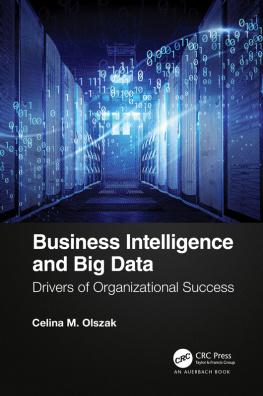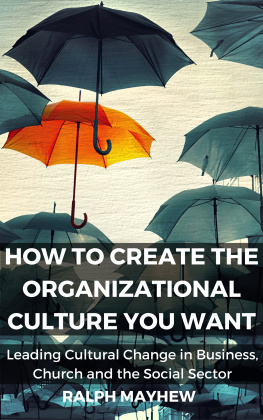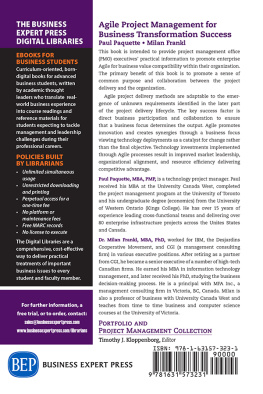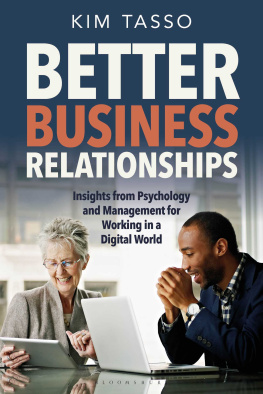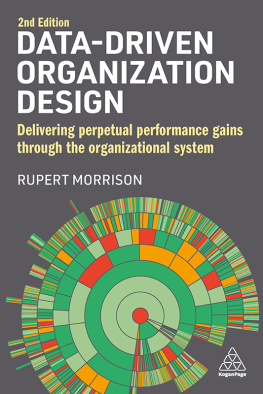
The beginning of the 21st century brought huge changes in the management domain, people's way of thinking, perception of organizational success and information technologies. Modern organizations are expected to be able to anticipate the future, quickly establish cause-and-effect relationships, and propose new ways of doing things. Allocating intangible resources (information and knowledge in particular) at the center of wealth production and skillfully utilizing information technologies have become a crucial task of the organization. Intelligent technologies and IT systems that are able to match the requirements of modern management have gained importance (Bui, 2000; Kersten, 2000; Laudon & Laudon, 2018; Olszak, 2016; Power, 2001; Turban et al., 2014).
It is claimed that change is an inherent element in which contemporary organizations have to operate. Growing information flows, new business practices, customers, competition, employees, and dramatically changing technology are the primary driving force of the ongoing changes. Technology plays an important role in both inducing and carrying out changes (McNurlin, Sprague, & Bui, 2014; Sauter, 2010).
Many authors are of the opinion (Rivard et al., 2004) that understanding the essence of changes that take place, both within and in the environment of modern organizations, and responding quickly to these changes, is the basis for achieving competitive advantage, improving customer relationships and enhancing organizational efficiency().

Figure 1.1 Organizations faced with changes.
The modern world has been dominated by information and information flows are becoming increasingly complex. The problem for many organizations is not the lack of information but its excess, which causes informational noise and even informational chaos. Information on the basis of which organizations make decisions comes from various scattered resources. Information is often incomplete, inconsistent, and volatile (Laudon & Laudon, 2018).
The nature of many decision-making problems has become extremely vague and fuzzy. Many events cannot be predicted or should be treated as hypotheses based on highly speculative premises. This applies in particular to dependencies that characterize the external environment of the organization, e.g., sales markets and long-term capital cost. Managers are faced with the need to solve problems with varying degrees of structuralization from well-structured to partially structured up to unstructured decisions. Solving many economic issues requires the use of an interdisciplinary approach, i.e., the ability to combine knowledge from various disciplines, especially management, economics, sociology, statistics, computer science, and even physics.
Today, flat, process, network, and contract structures are gaining in importance in modern organizations where team coordination, self-discipline, trust in employees, business partners, as well as individual responsibility for created relationships and communication play a crucial role. Projects where employees are focused on tasks aimed at achieving specific goals are a vehicle for many types of work in organizations. The criteria for selecting members for such project teams are knowledge, competence, and experience. Organizations are becoming a complex chain of networks and decision-making teams that go beyond their traditional boundaries (Kelly, 2001).
It is hard not to notice that in traditional organizations, built in accordance with the linear hierarchical model, decision-making powers were clearly defined, well demarcated, and precisely distributed in a horizontal and vertical system (Jamali, 2005). The distribution of decision-making powers and associated responsibilities is usually less defined, less rigid, and more blurred in organizations with flatter structures. In such organizations, there are no clear and permanent divisions of work, and the exchange of information takes place in a highly individualized manner. Information centers, and consequently power centers, are dispersed, and in many cases hidden. They change their boundaries and internal structure. Most decisions are made in the process of consultations, negotiations, and tenders. Power is usually obtained for a short time, without any institutional and social guarantees, since it is situational, i.e., connected with the system of variable forces, and it must be constantly sought.
The need to make increasingly complex decisions, based on highly aggregated and processed data, creates demand for new professions and fields of employment. These include, in particular, analysts, statisticians, and specialists in the field of data science, as well as creators of electronic markets, webmasters, Internet service providers, information and knowledge brokers, application testers, and security specialists. Work can increasingly be done remotely, and employees face retraining, frequent job changes, and even profession changes. Notably, already in 2020, approximately 85% of all professions in North America and 80% in Europe required the use of knowledge resources, and specialized software and hardware. At the same time, there is a dramatic reduction in employment in the area of material production, both industrial and agricultural. Research shows that, in a 2030 perspective, there will be a global growing demand for competences related to the ability to solve complex problems, critical and creative thinking, having interdisciplinary knowledge and the ability to negotiate, communicate, and cooperate. The progressive development of information technologies, contrary to what may seem, requires from employees not only skills related to the operation of equipment, mobile devices, and Internet but also the soft skills mentioned above. In addition, progressing globalization means that employees and managers use different languages and often have different cultural roots. It can be assumed that just as the process of receiving and evaluating information itself may significantly differ in such multicultural teams, the premises that guide them in making decisions may also be different (Viehland, 2005). This means that organizations should clearly provide their employees with information about the organization's goals and how to achieve them, as well as care for developing common ethical behavior and understanding of values. Furthermore, in fact, employees also place more and more demands on their employers. They expect support from them in the area of professional development and promotion as well as creating conditions for safe and decent work.
Customers are believed to have become the driving force behind many changes that are taking place inside the organization and in its business environment. A modern customer is often a very inquisitive, well-educated person interested in highly personalized services and products; together with producers shaping the organization's value system (Brilman, 2002; Chapman, 2001). The customer's interest in a specific offer and maintenance of their long-term loyalty to the company has become extremely difficult, and also a priority task for many organizations. It is regarded that organizations can deal with these issues by developing the ability to quickly discover and satisfy customer needs by providing highly personalized products and services. However, it should be noted that personalization requires changes in virtually everything that the organization has done so far (from needs analysis, through product design, advertising, to distribution). The correct implementation of the individualization assumptions is associated with the development of various relationships with customers and suppliers, which should be based on trust and close integration. It must be admitted that we still know too little about how to anticipate those needs. Skills in customer segmentation and profiling, reaching the target group as soon as possible, developing individual customer relationships, and engaging them in the process of developing new products and services are extremely valuable (Tiwana, 2000).
Next page
